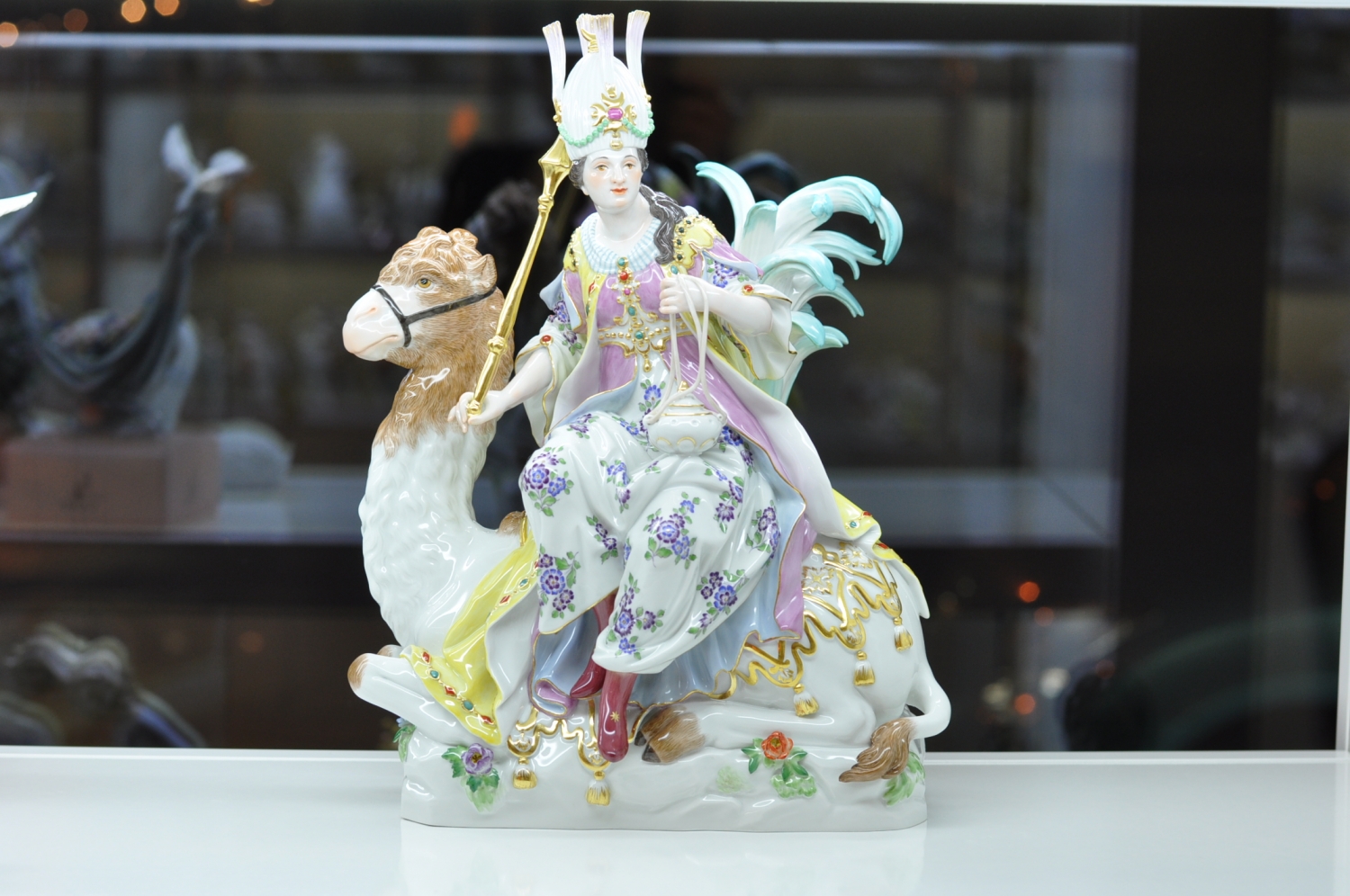"Asia"
Sculptors: Johann Friedrich Eberlein and Johann Joachim Kaendler
Year of creation: 1745
Height: 31 cm

This figure represents an allegory of Asia, one of the continents. Since ancient times, the Old World was divided into three continents: Asia, Africa and Europe. The southern transatlantic continent, discovered by the Portuguese in the first decade of the 16th century (1500-1502), become known as The New World or as America.
It is with the Asian continent that the Meissen collection of allegories began. Commissioned by the Russian Empress Elizabeth, sculptor Johann Friedrich Eberlein began working on the Asia composition in 1745, but its plaster mold was created only 2 years later by Kaendler. It is possible the late 16th century lithography of Adriaen Collaert (see illustration) became the initial prototype of the sculpture.
For a very long time, the figure was one of the most desired works from the production at the manufactory Meissen. In 1771 she underwent only minor modifications.
“Asia” is with its 31 cm the biggest of the four allegories.
In this composition, a Turkish woman is seated on a camel, i.e. the most classic allegory of Asia. The back of the camel is covered with a gold blanket with oriental brushes. In the fashion of the time, it was not acceptable for women to flip one leg over the animal's back, so the Turkish woman sits on one side of the animal.
The woman’s head is slightly turned towards the palm tree, but she has a straight look. She has a turban on her head, and in her right hand she holds a golden scepter (one of the signs of royal, monarchic authority) and in her left hand a lamp with incense (the sacred censer). According to the custom, incensing means strength and wards off against evil spirits.
The top of the scepter, and the central front of the turban are decorated with a crescent, the symbol of the Ottoman Empire and of Islam. It is noteworthy that in the East the turban has always been considered a male headdress. The availability and amount of hair bundles, and attached gems interconnected by strings of pearls, determined a person's status in society.
Turkish pointy boots with eight-pointed stars (the second part of the symbol of Islam, its independence and divinity as eight individual rays of the star correspond to the eight gates of Paradise) peep from under the wide trousers of the woman.
According to the words of Eberlein himself, he was ordered by the Russian empress to display all the basic attributes of the continent of Asia. The sculptor was able to skillfully express the entire culture and beauty of the eastern countries in symbols.


